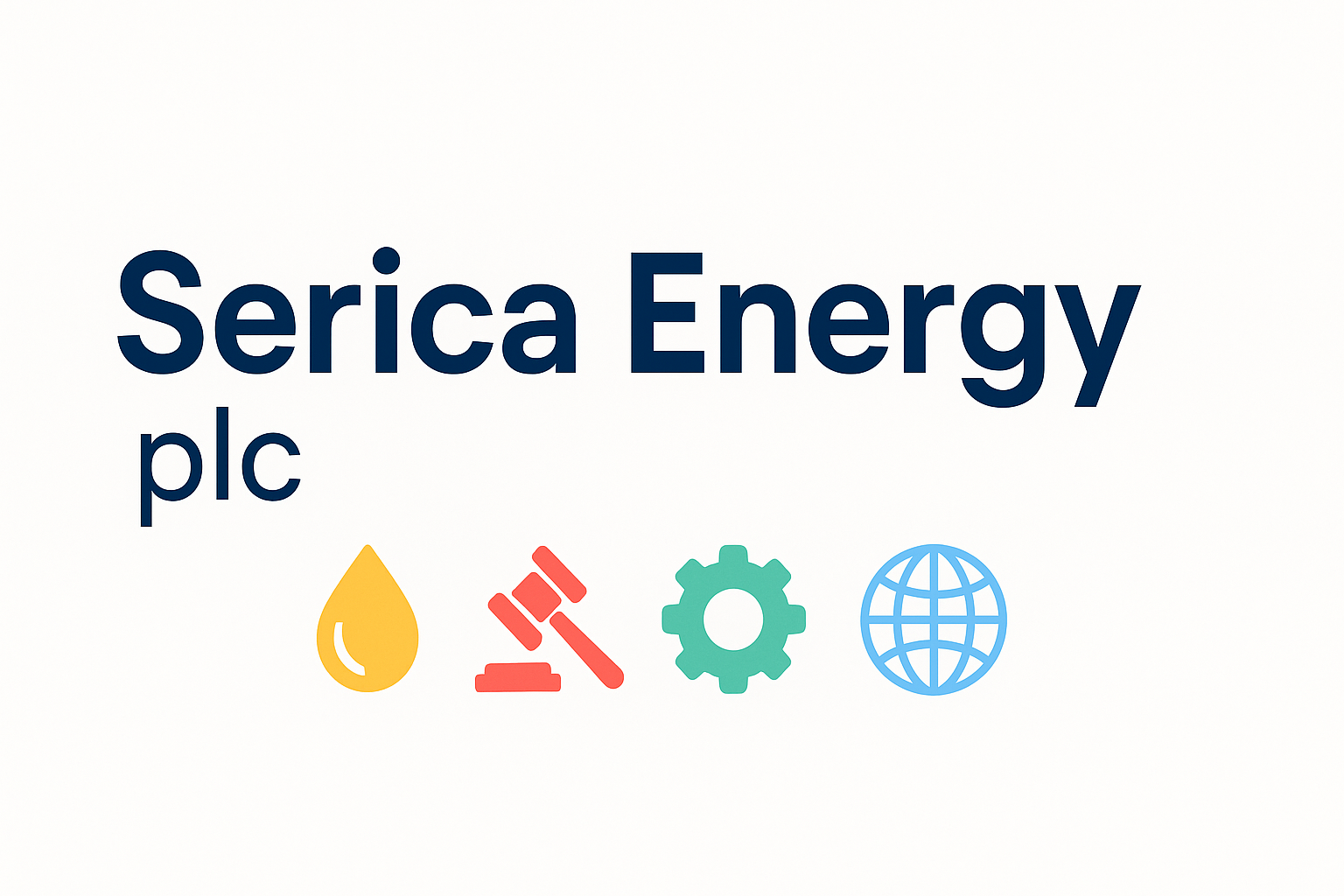Serica Energy plc: Driving Growth in the UK North Sea Energy Sector
Exploring the strategic evolution, production resilience, and investment potential of Serica Energy plc

Introduction to Serica Energy plc
Serica Energy plc is a leading independent upstream oil and gas company focused primarily on exploration and production activities in the UK North Sea. As a publicly traded entity listed on the London Stock Exchange’s AIM market under the ticker symbol SQZ, Serica has carved out a reputation for efficiency, reliability, and strong operational performance. The company plays a critical role in ensuring domestic energy supply in a period marked by heightened energy security concerns and shifting global dynamics.
With a diverse portfolio that includes key assets such as the Bruce, Keith, Rhum, Columbus, and Triton area fields, Serica Energy plc has become one of the largest UK-centric producers. This article delves into the company’s operations, leadership, market performance, future outlook, and broader impact within the energy industry.
Operational Overview
A Focus on the North Sea
Serica Energy’s operations are concentrated exclusively in the UK North Sea—an area rich in hydrocarbon resources and critical to the UK’s domestic energy needs. Unlike many competitors who seek overseas expansion, Serica has remained committed to leveraging its deep operational experience and existing infrastructure in this region.
Key Producing Assets
Bruce, Keith, and Rhum Fields
These three interconnected fields form the backbone of Serica’s production portfolio. Acquired from BP, Total, and others, the assets represent mature yet high-value fields. The Rhum field, in particular, is a high-pressure, high-temperature gas field jointly operated with Iranian interests, making regulatory compliance and operational resilience critical.
Triton Area Fields
Serica acquired a 30% interest in the Triton area, which includes multiple producing fields such as Bittern, Guillemot West, and Clapham. Despite weather-related production shutdowns in early 2025, the company has managed a strategic restart, boosting future output expectations.
Columbus and Erskine
The Columbus field, brought into production in 2021, has complemented Serica’s asset base with consistent output. Meanwhile, the Erskine field remains a stable source of revenue, despite its aging infrastructure.
Financial Performance and Investment Outlook
Production and Revenues
As of the 2024 financial year, Serica Energy reported annual production ranging between 33,000–37,000 barrels of oil equivalent (boe) per day. With 2P reserves estimated at 117.5 million boe, the company maintains a solid resource foundation for future growth.
Serica’s low operating costs, strong cash flow generation, and robust balance sheet—featuring over £100 million in net cash—have positioned it well amid volatile oil and gas prices. The dividend yield stands at an attractive 10%+, reinforcing investor confidence.
Share Price Forecast
Analyst forecasts for Serica Energy’s share price range from 185 to 230 pence, indicating significant upside from recent trading levels (~166p). The company’s healthy earnings before interest, tax, depreciation, and amortization (EBITDA), combined with strategic acquisitions and optimized production, make it a compelling investment in the energy sector.
Leadership and Strategy
CEO Chris Cox’s Vision
Since July 2024, CEO Chris Cox has steered the company through turbulent market conditions. With a background at Centrica’s Spirit Energy, Cox has focused on improving operational efficiency and realigning strategy towards core UK assets. His leadership has been instrumental in stabilising the company post-COVID, while balancing regulatory challenges such as the UK’s windfall tax.
Sustainable Operations and ESG
Serica’s annual ESG report outlines efforts to reduce emissions, enhance offshore safety, and maintain community engagement. The company’s environmental goals are aligned with UK decarbonisation targets, and it is gradually integrating sustainability into its asset management practices.
Ownership and Governance
Shareholder Composition
Serica Energy plc maintains a strong institutional ownership base. Mercuria Holdings is the largest shareholder with a ~24.7% stake. Other major institutional investors include Janus Henderson and Man Group, showcasing broad financial confidence in Serica’s strategy.
Corporate Governance
Serica has maintained a robust governance framework, with a mix of experienced executives and independent directors. Transparency, shareholder engagement, and ethical business conduct are central to the company’s governance practices.
Challenges and Risks
Regulatory and Taxation Pressures
UK government-imposed windfall taxes on energy producers have sparked concerns across the industry. Serica has publicly voiced its apprehension about the potential deterrent this poses to future investment. Despite this, the company continues to seek fiscal dialogue and advocate for policy stability.
Weather and Production Risks
The harsh North Sea climate poses significant operational challenges. In early 2025, Storm Éowyn forced temporary shutdowns of the Triton FPSO, delaying production timelines. However, Serica’s swift recovery and planning have demonstrated resilience and adaptability.
Future Prospects
Mergers and Acquisitions
Although merger talks with EnQuest fell through in May 2025, Serica remains an active player in the M&A space. Its cash-rich position makes it an attractive suitor for smaller North Sea assets or distressed energy firms.
Production Expansion and Innovation
The company is exploring opportunities for enhanced oil recovery (EOR) technologies and digital monitoring systems across its offshore platforms. These investments are expected to boost efficiency and reduce unplanned downtime.
Conclusion
Serica Energy plc stands as a prime example of a mid-cap energy company that has balanced profitability, operational excellence, and regulatory navigation. Its focus on UK assets, strong leadership, shareholder-friendly policies, and future-forward outlook ensure its continued relevance in the British energy landscape.
With growing domestic energy needs and a renewed focus on security and sustainability, Serica is well-placed to remain a cornerstone of the UK’s energy independence strategy.
Frequently Asked Questions (FAQ)
What is Serica Energy plc?
Serica Energy plc is a UK-based independent oil and gas company focused on exploration and production in the North Sea.
Who owns Serica Energy?
Mercuria Holdings is the largest shareholder, holding nearly 25% of the company’s stock. Other institutional investors also have significant stakes.
What are Serica Energy’s main assets?
Key assets include the Bruce, Keith, Rhum, Triton area fields, Columbus, and Erskine—all located in the UK North Sea.
What is Serica Energy’s stock ticker?
Serica is listed on the London AIM market under the ticker symbol SQZ.L.
What is the dividend yield of Serica Energy?
As of 2025, Serica Energy offers a dividend yield of over 10%, making it attractive to income-focused investors.
Is Serica Energy investing in sustainability?
Yes, Serica publishes annual ESG reports and is working toward reducing carbon emissions and ensuring environmentally responsible operations.



